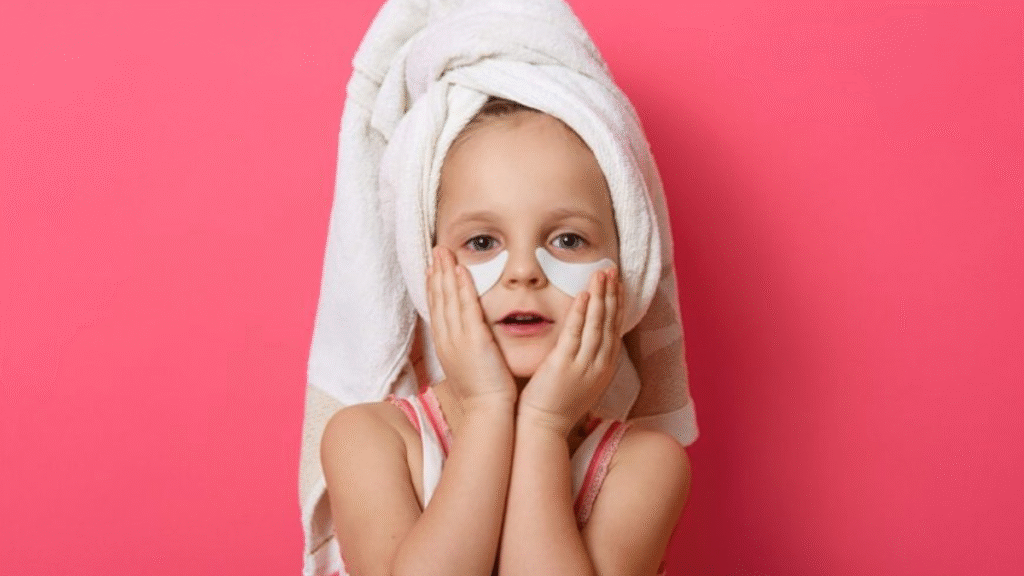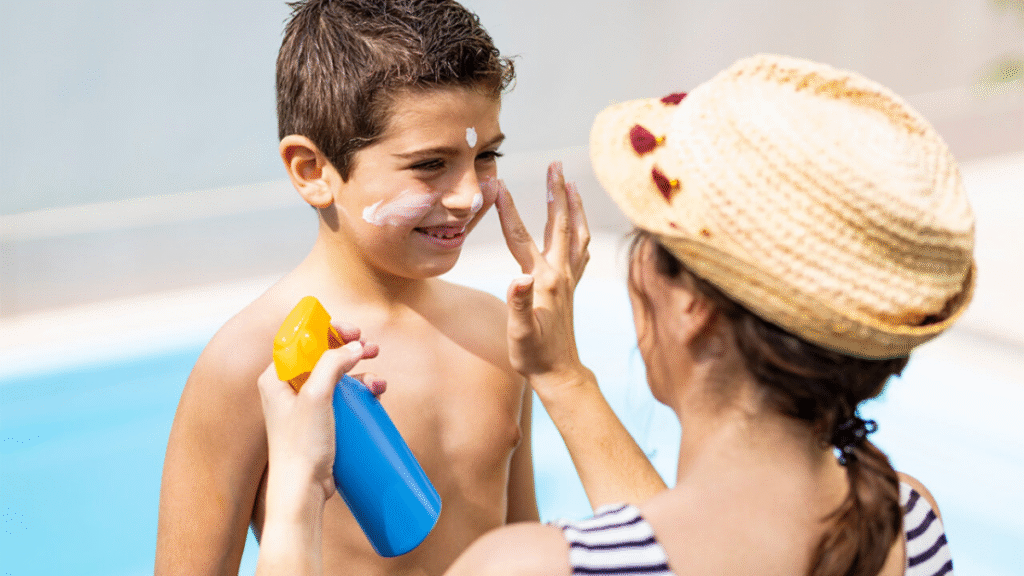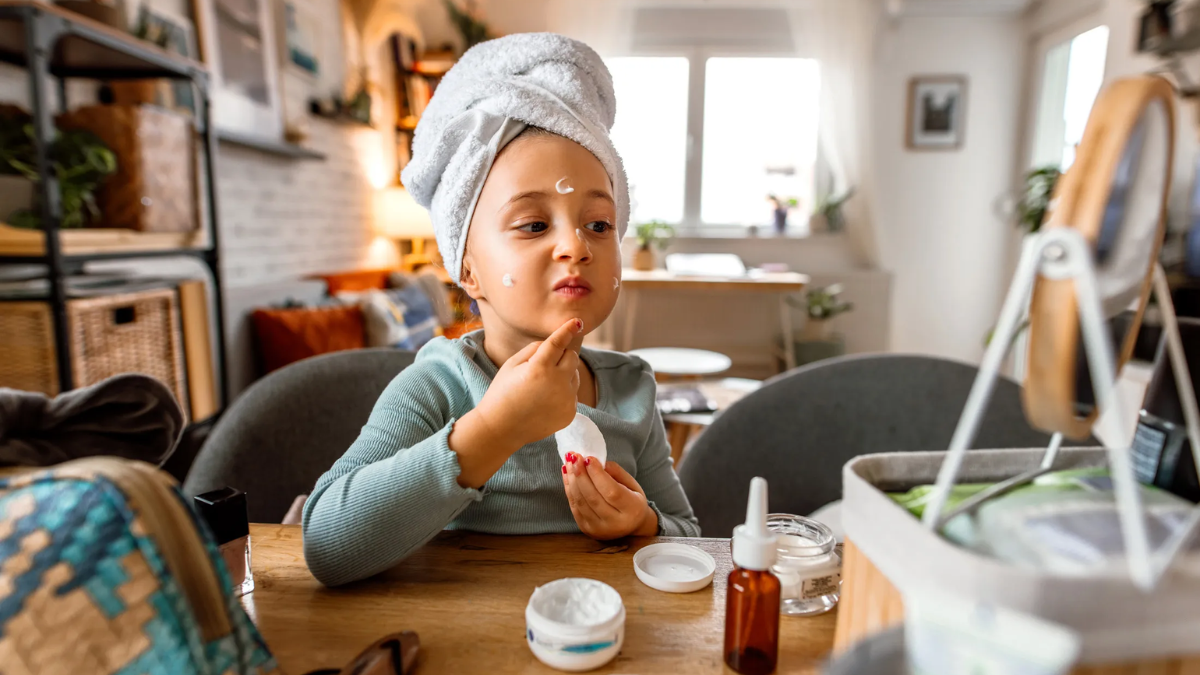Children’s skin is delicate, sensitive, and still developing, which makes proper skincare essential. Unlike adults, kids need gentle, safe, and non-toxic skincare routines that protect their skin without causing irritation or dryness. Parents often wonder how to keep their child’s skin soft, healthy, and free from issues like rashes, dryness, or allergies. This comprehensive guide will help you understand the basics of skincare for kids, common skin problems, and how to choose the right products and routines for your child’s skin.
Understanding Kids’ Skin
Why Children’s Skin Needs Special Care
A child’s skin is about 30% thinner than adult skin, making it more sensitive and prone to dryness, irritation, and infections. The skin’s protective barrier is still developing, which means it can easily lose moisture and become irritated by environmental factors, harsh soaps, or synthetic ingredients.
Characteristics of Children’s Skin
Kids’ skin has a higher water content, is more permeable, and produces less natural oil (sebum). This combination makes their skin soft and smooth but also more vulnerable to dehydration and environmental stressors.
Importance of a Skincare Routine for Kids
Developing a gentle skincare routine from an early age helps kids build healthy habits that protect their skin in the long term. A proper routine can:
- Maintain skin moisture and softness
- Prevent rashes, dryness, and irritation
- Reduce the risk of allergies and infections
- Promote overall skin health and hygiene
Basic Skincare Routine for Kids
Step 1: Gentle Cleansing
Cleansing is the foundation of any skincare routine. Use a mild, fragrance-free cleanser designed for children’s sensitive skin. Avoid adult soaps or cleansers that contain sulfates or alcohol. Choose gentle ingredients like aloe vera, chamomile, or oat extract to clean without stripping moisture.
Step 2: Moisturizing

After cleansing, apply a lightweight, hypoallergenic moisturizer to lock in hydration. Lotions with shea butter, coconut oil, or glycerin are excellent options. Apply moisturizer immediately after bathing to seal in moisture.
Step 3: Sun Protection
Even though kids love to play outdoors, exposure to UV rays can harm their skin. Always apply a broad-spectrum, mineral-based sunscreen (SPF 30 or higher) when your child is outside. Look for sunscreens with zinc oxide or titanium dioxide—these are safe and effective for sensitive skin.
Step 4: Lip Care
Kids’ lips can dry out easily, especially during winter. Apply a natural lip balm made with coconut oil or beeswax to prevent chapping.
Step 5: Hair and Scalp Care
Use a mild, tear-free shampoo to keep the scalp clean. Avoid over-washing to prevent dryness, and gently massage the scalp to promote healthy hair growth.
Common Skin Problems in Kids and Natural Solutions
Diaper Rash
Diaper rash is a common issue for babies and toddlers caused by moisture, friction, and bacteria. Use a zinc oxide cream or natural remedies like aloe vera gel and coconut oil to soothe irritation. Keep the diaper area dry and change diapers frequently.
Eczema
Eczema causes dry, itchy, and red patches on the skin. To manage eczema, use fragrance-free products, moisturize regularly, and avoid hot baths. Natural remedies like oatmeal baths and calendula cream can help calm irritation.
Dry Skin
Children’s skin can easily become dry, especially in cold weather. Use humidifiers indoors, limit bath time, and moisturize with shea butter or natural oils to keep the skin soft.
Heat Rash
Heat rash appears as small red bumps when sweat glands become blocked. Dress your child in breathable cotton clothing and keep them cool. Applying aloe vera or rose water can help soothe discomfort.
Allergic Reactions
Kids can react to harsh ingredients in soaps, detergents, or lotions. Always patch-test new products before use and opt for hypoallergenic, fragrance-free formulas.
Choosing Safe Skincare Products for Kids
Check the Ingredient List
Avoid products containing parabens, sulfates, artificial fragrances, and alcohol. These can irritate sensitive skin. Look for natural ingredients like chamomile, aloe vera, cocoa butter, and coconut oil.
Use Age-Appropriate Products
Infants, toddlers, and older children have different skincare needs. For babies, stick to ultra-gentle, pH-balanced products. As kids grow older, you can introduce mild cleansers and lotions formulated for children.
Opt for Dermatologist-Tested Brands
Choose brands that are pediatrician and dermatologist-approved. These products are tested for safety and are less likely to cause irritation.
Less is More
Avoid overloading your child’s skin with too many products. A simple routine—cleanse, moisturize, and protect—is often all that’s needed.
Natural Ingredients That Work Wonders for Kids’ Skin
Aloe Vera
Aloe vera is soothing, hydrating, and perfect for sensitive skin. It helps heal minor cuts, burns, and rashes.
Coconut Oil
Rich in fatty acids, coconut oil deeply nourishes and protects the skin barrier. It’s a great natural moisturizer for dry skin.
Oatmeal
Oatmeal has anti-inflammatory properties that relieve itching and irritation. Add it to bathwater for a calming soak.
Chamomile
Chamomile extract helps soothe redness and irritation. It’s ideal for sensitive or eczema-prone skin.
Shea Butter
Shea butter locks in moisture and strengthens the skin’s protective barrier, keeping it soft and hydrated.
Bathing Tips for Kids
- Use lukewarm water instead of hot water to prevent dryness.
- Keep baths short—5 to 10 minutes is ideal.
- Add a few drops of coconut oil or oatmeal powder to bathwater for extra hydration.
- Pat the skin dry with a soft towel instead of rubbing.
- Apply moisturizer right after the bath to trap moisture.
Skincare for Different Seasons
Winter Care
Cold air can make your child’s skin dry and chapped. Use thicker creams, lip balms, and cover exposed skin when going outside.
Summer Care

In summer, focus on sun protection and hydration. Use lightweight moisturizers and apply sunscreen before outdoor play.
Monsoon Care
During humid weather, ensure your child’s skin stays clean and dry. Use antifungal powders if needed to prevent infections.
Building Healthy Habits Early
Teaching kids about skincare early helps them understand hygiene and self-care. Encourage them to:
- Wash their face twice daily
- Avoid touching their face with dirty hands
- Stay hydrated
- Eat fruits and vegetables for skin health
- Apply sunscreen before playing outdoors
When to See a Dermatologist
If your child develops persistent rashes, itching, or redness that doesn’t improve with gentle care, consult a pediatric dermatologist. Some conditions, like eczema or psoriasis, may require medical treatment or prescription creams.
Also Read: Sensitive Skin In Kids: Causes, Care, and Prevention Tips
Conclusion
Caring for your child’s skin is about simplicity, consistency, and safety. By using gentle, natural, and hypoallergenic products, parents can protect their kids’ delicate skin while encouraging healthy habits that last a lifetime. The best skincare for children doesn’t need to be complicated—just pure, natural, and nurturing. With the right care, your child’s skin will remain soft, radiant, and healthy through every stage of growth.
FAQs
Q1: How often should kids take a bath?
Most kids can bathe once a day, but infants may only need a bath 2–3 times per week to avoid drying out their skin.
Q2: Can kids use adult skincare products?
No, adult products are usually too harsh for a child’s sensitive skin. Always choose products formulated specifically for children.
Q3: Is sunscreen safe for babies?
For babies under six months, avoid direct sunlight instead of using sunscreen. For older babies and kids, use mineral-based sunscreens with zinc oxide or titanium dioxide.
Q4: How can I treat my child’s dry skin naturally?
Use natural moisturizers like coconut oil, aloe vera, or shea butter after bathing to lock in moisture and prevent dryness.
Q5: What should I do if my child develops a rash?
Keep the area clean and dry, avoid harsh soaps, and apply soothing creams like aloe vera or zinc oxide. If it persists, consult a doctor.

